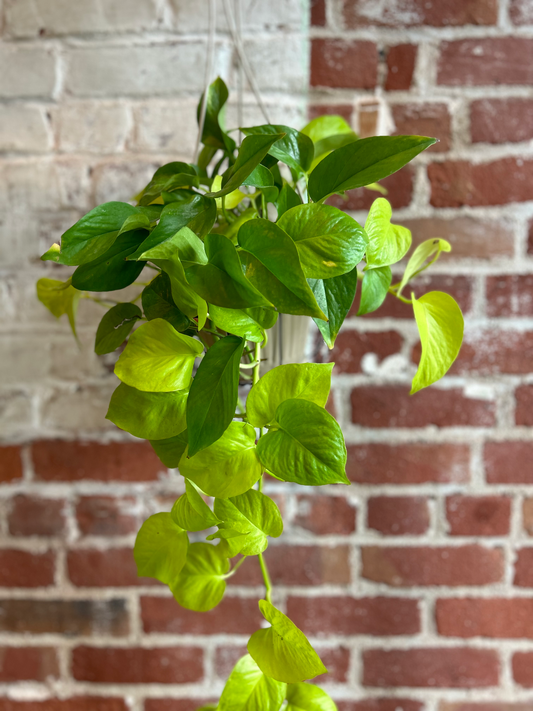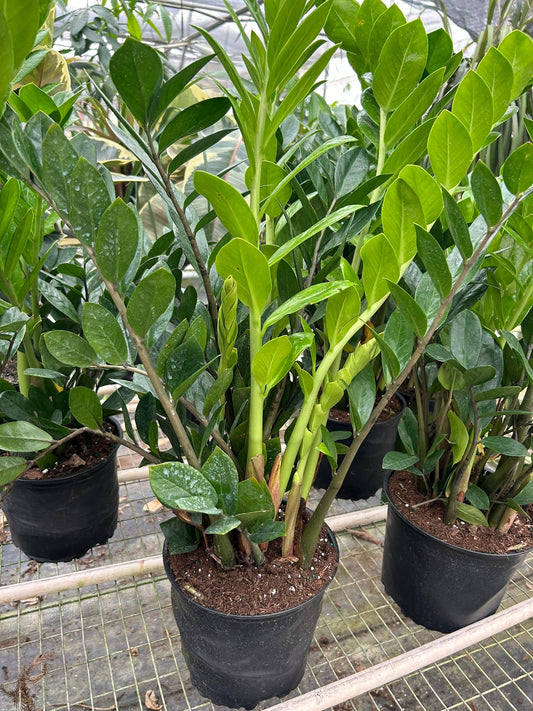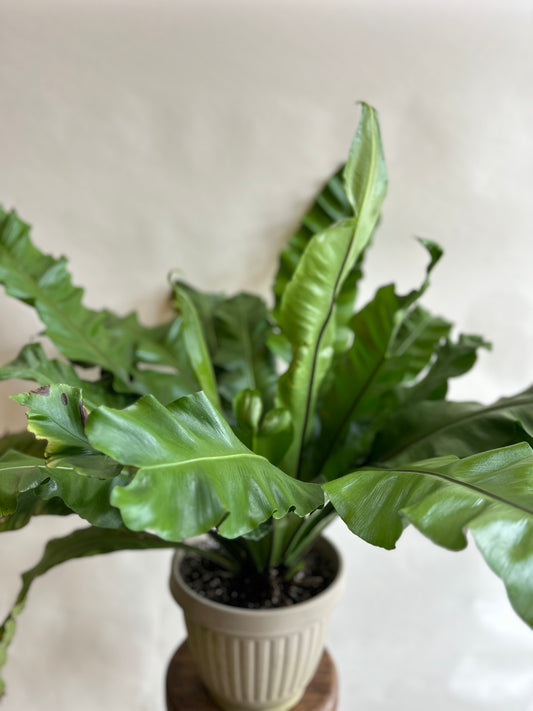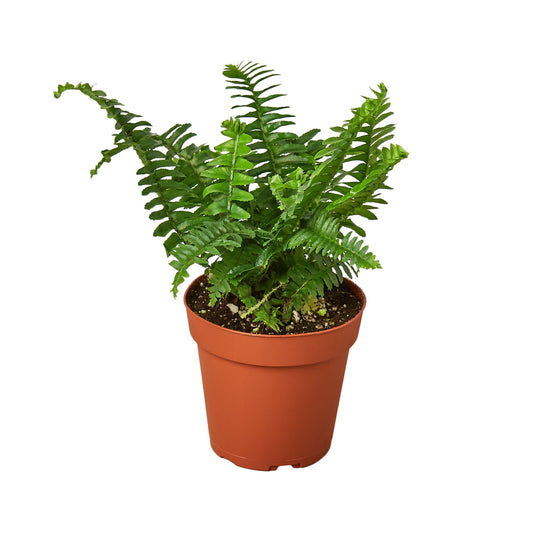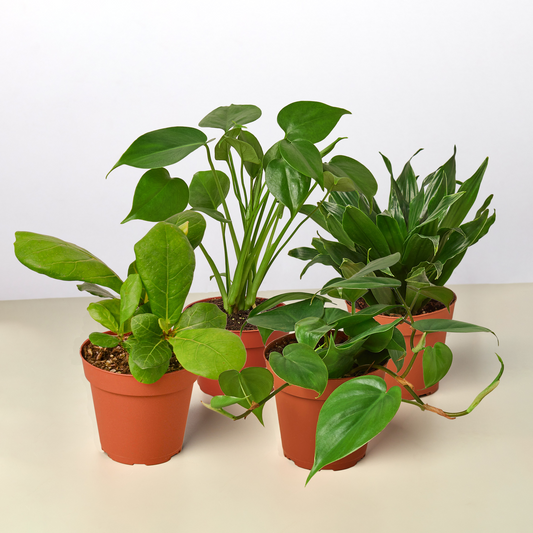How to Grow and Care for Cymbidium Orchids
Cafe Planta Team
When it comes to indoor gardening, few plants capture the imagination quite like Cymbidium orchids. With their vibrant colors and striking floral displays, these orchids can transform any space into a living masterpiece. But while the allure of their beauty is undeniable, caring for Cymbidium orchids requires a bit of know-how and patience.
This article will share practical tips and insights on growing and nurturing Cymbidium orchids in your home. From selecting the right potting mix to understanding the nuances of their watering needs, you'll find everything you need to know to keep these stunning plants thriving.
Choosing the Right Cymbidium Orchid
Before diving into the intricacies of care, let's start with selecting the right Cymbidium orchid for your home. These orchids come in a variety of colors and sizes, making them a versatile choice for plant lovers. Whether you're drawn to their elegant whites or vibrant yellows, there's an option to suit every aesthetic preference.
When choosing an orchid, consider the following:
- Bloom Size: Cymbidiums range from miniature to large blooms. Miniature varieties are perfect for smaller spaces while larger blooms make a bold statement.
- Color Preferences: With hues spanning from soft pastels to deep jewel tones, pick a color that complements your existing decor.
- Fragrance: Some Cymbidium varieties boast a delightful fragrance. If scent is important to you, look for these specific types.
Interestingly enough, the health of your chosen plant is crucial. Inspect the leaves and roots before purchasing. Healthy leaves should be firm and a vibrant green, while roots should be white or light-colored and firm to the touch.
Understanding Light Requirements
Light is a vital component of any plant's care, and Cymbidium orchids are no exception. These orchids thrive in bright, indirect light, making a well-lit room with filtered sunlight an ideal environment. Direct sunlight can scorch their leaves, so it's best to avoid placing them in south-facing windows without some form of shading.
Here are some tips to get the lighting just right:
- East or West Windows: These provide the perfect amount of light for Cymbidiums, offering bright but not harsh sunlight.
- Artificial Lighting: If natural light is limited, consider using grow lights to supplement. Position them about 12 inches above the plant for optimal results.
- Watch for Signs: Yellowing leaves may indicate too much light, while dark green leaves can signal insufficient light.
Adjusting your orchid's position throughout the year can also help. During the summer, you might need to move them away from direct sun, while winter might require repositioning to maximize light exposure.
The Perfect Potting Mix
Getting the potting mix right is a game-changer for Cymbidium orchids. These plants prefer a mix that offers excellent drainage while retaining some moisture. You can find pre-mixed orchid potting media at most garden centers, but creating your own mix is also an option.
Consider the following ingredients for a homemade mix:
- Bark Chips: Provide drainage and aeration, which are essential for orchid roots.
- Perlite or Charcoal: Helps with drainage and prevents the mix from becoming compacted.
- Sphagnum Moss: Retains moisture while still allowing for airflow around the roots.
When potting your orchid, choose a container with drainage holes to prevent waterlogging. It's also wise to repot your Cymbidium every two years to refresh the potting mix and check the health of the roots.
Watering Wisdom
Watering Cymbidium orchids can be a balancing act. Too much water can lead to root rot, while too little can cause the plant to dry out. The key is to find a middle ground that keeps your orchid happy and healthy.
Here are some general guidelines:
- Water Frequency: Water your Cymbidium once a week during the growing season (spring and summer). Reduce watering in the fall and winter when the plant is less active.
- Check the Mix: Before watering, check the potting mix. It should feel dry about an inch below the surface before you water again.
- Use Distilled Water: Tap water can contain salts and chemicals that are harmful to orchids. If possible, use distilled or rainwater.
A simple trick is to water in the morning, allowing any excess moisture on the leaves to evaporate by evening, which helps prevent fungal issues.
Temperature and Humidity
Cymbidium orchids have particular temperature and humidity needs that help them thrive. These plants prefer cooler temperatures than some other orchids, making them well-suited to many indoor environments.
Here's what you need to know:
- Daytime Temperatures: Aim for 70-85°F during the day. This range supports growth and flowering.
- Nighttime Temperatures: Cooler temperatures, around 50-60°F, are ideal. This drop in temperature is crucial for triggering blooms.
- Humidity Levels: Cymbidiums prefer moderate humidity. Aim for around 40-60%. You can increase humidity with a humidifier or by placing a water tray near the plant.
If you notice your orchid's leaves wilting or developing brown tips, it might be a sign of low humidity. Regular misting can help alleviate this issue, but avoid misting in the evening to prevent fungal growth.
Feeding Your Cymbidium
Feeding your Cymbidium orchid is another step to ensure lush blooms and healthy growth. Fertilizing provides the nutrients your orchid needs to thrive, especially during its active growth phases.
Consider these feeding tips:
- Use a Balanced Fertilizer: Look for a fertilizer specifically formulated for orchids, usually with a balanced N-P-K ratio.
- Frequency: Fertilize every two weeks during the growing season. In the winter, reduce to once a month.
- Application: Dilute the fertilizer to half strength to avoid burning the roots, and always apply to damp potting mix.
Feeding is all about balance. Too much fertilizer can be just as harmful as too little. Pay attention to how your plant responds and adjust as needed.
Dealing with Pests and Diseases
Orchids, like any houseplant, can be susceptible to pests and diseases. The good news? With a bit of vigilance and prompt action, you can keep these issues at bay.
Common pests include:
- Spider Mites: These tiny pests can cause stippling on leaves. Remove them with a gentle spray of water or insecticidal soap.
- Aphids: Often found on new growth, they can be treated with neem oil or insecticidal soap.
- Slugs and Snails: These can be particularly damaging. Handpick or use bait to control them.
For diseases, watch for signs of root rot, which is often caused by overwatering. If you notice mushy roots or a foul smell, it's time to repot with fresh mix and trim away any damaged roots.
Encouraging Blooms
One of the most rewarding aspects of growing Cymbidium orchids is witnessing their beautiful blooms. However, coaxing them to flower can sometimes be a challenge. Understanding their blooming cycle can make all the difference.
Here are some tips to encourage blooming:
- Temperature Drop: A night temperature drop is necessary. Ensure there's a 10-15°F difference between day and night.
- Respect Dormancy: After blooming, Cymbidiums enter a rest period. Reduce watering and feeding during this time.
- Proper Light: Ensure your orchid is getting enough indirect light. Lack of light is a common reason for failure to bloom.
Sometimes, patience is the best strategy. Orchids can take a while to rebloom, so give them time to adjust to their environment.
Integrating Cymbidiums into Your Home Decor
Beyond their beauty, Cymbidium orchids can also play a significant role in your home decor. With their striking flowers and lush foliage, they can be a focal point or a complement to your existing decor.
Consider these ideas for integrating them into your space:
- Centerpieces: Use Cymbidiums as a living centerpiece on dining tables or coffee tables. Their blooms add a touch of elegance.
- Group with Other Plants: Pair them with ferns or other orchids for a lush, tropical feel.
- Stylish Containers: Choose decorative pots that match your style, whether that's minimalist, rustic, or modern.
Interestingly, Cymbidiums can adapt to a variety of settings. Whether placed in a contemporary living room or a cozy reading nook, they bring a natural beauty that enhances their surroundings.
Final Thoughts
Caring for Cymbidium orchids is a fulfilling experience that brings not only beauty but also a sense of accomplishment. From selecting the right plant to ensuring it has the perfect environment, each step is an opportunity to connect with nature and bring a little more life into your home.
At Cafe Planta, we believe plants have the power to connect us all. Whether you're a seasoned plant parent or just starting your journey, we're here to help you create a thriving plant collection. If you have questions, don't hesitate to email us or reach out on Instagram. Let's grow together!


